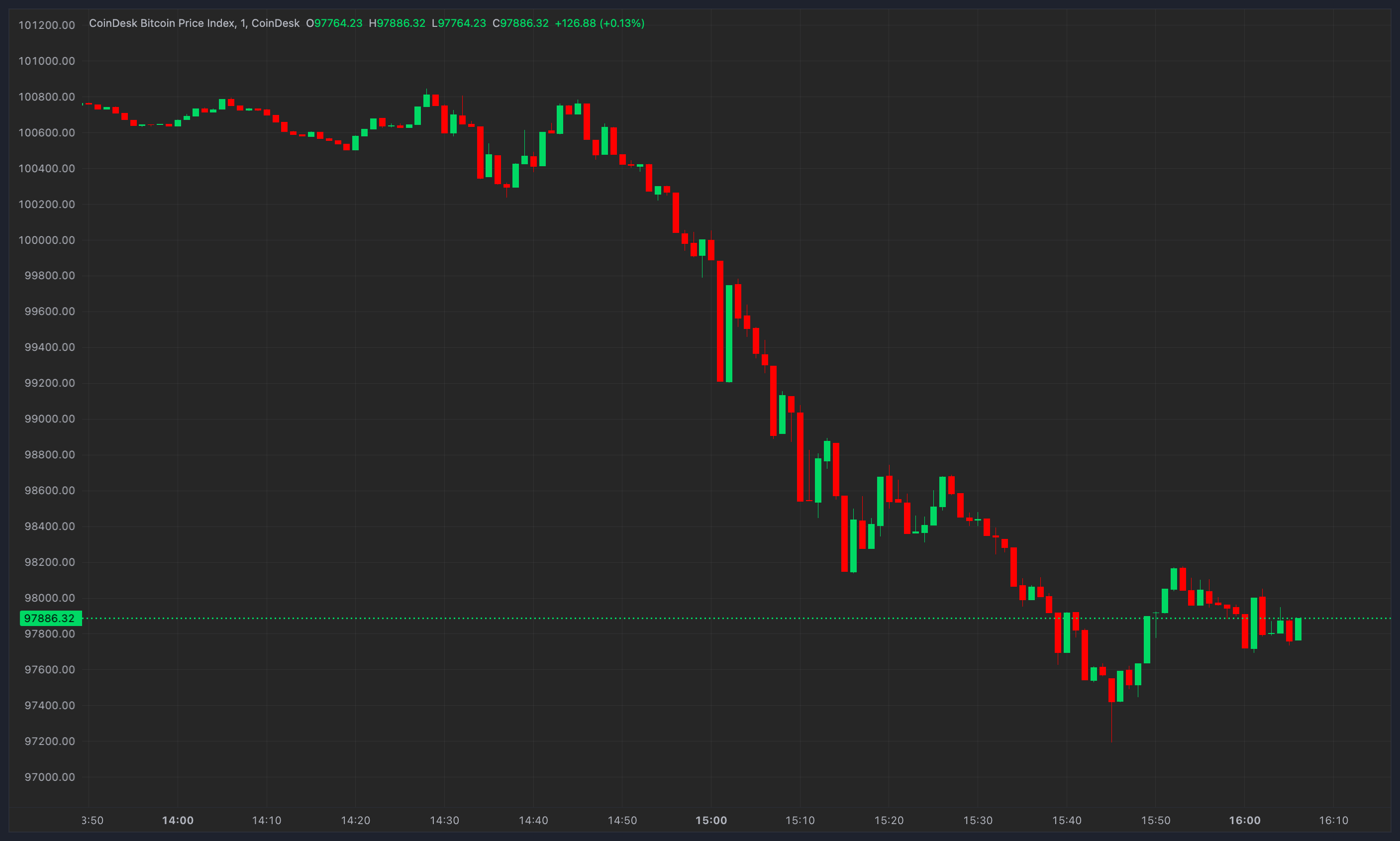New York, Oct. 25, 2022 (GLOBE NEWSWIRE) — Reportlinker.com announces the release of the report “Global Decentralized Finance Market Size, Share & Industry Trends Analysis Report By Component, By Application, By Regional Outlook and Forecast, 2022 – 2028” – https://www.reportlinker.com/p06352722/?utm_source=GNW
The majority of DeFi applications imitate conventional payment system offerings inside the crypto-asset ecosystem rather than offering brand-new financial goods and services. The primary distinction is how DeFi offers services instead of depending on centralized middlemen.
Due to the high level of revenue production and its transfer back to liquidity providers, customers have great incentives to engage DeFi. The number of people involved is crucial in generating the liquidity supply that supports DeFi protocols since it positively corresponds with the money made in DeFi. As a result, new users are encouraged to adopt protocols with significant revenue potential, which ultimately helps such protocols potentially scale up.
One of the main factors influencing market growth is the financial sector’s significant shift as a result of the adoption of DeFi (Decentralized Finance). Over the past five years, interest in how DeFi and decentralized platforms interact on the blockchain has grown. The capacity of DeFi to remove middlemen from financial operations has expanded adoption. DeFi has also had the greatest influence in the insurance sector because the traditional system is plagued by convoluted processes, paperwork, and audit systems.
COVID-19 Impact Analysis
With the advent of blockchain technology, the COVID-19 pandemic outbreak has caused a revolution in a variety of businesses. The market’s main driver during the outbreak was the requirement for streamlining and optimizing supply chain applications and corporate procedures. Loans on DeFi platforms have climbed more than seven times. Once at time when central banks all over the world have decreased interest rates to assist economies that have been negatively impacted by the pandemic, investors are looking for gains. Thus, the decentralized finance market would surge in the coming years as things are getting back on track in the post-pandemic period.
Market Growth Factor
Reduction in The Worldwide Gap in Financial Inclusion and Immutability Benefit of Defi
The underlying value and influence of decentralized technologies are extremely significant, even though most of the attention and investment in them now is motivated by speculation. For instance, basic financial services are frequently unavailable or substandard owing to a variety of issues, including economic underdevelopment, subpar infrastructure, regulatory issues, etc. Even in highly developed nations, one’s socioeconomic level affects both the quantity and quality of financial services to which they have access. The creation and acceptance of open, international financial services may contribute to closing the gap between financial inclusion and opportunity throughout the world that is continuously expanding.
Increasing Popularity of Defi Due to Its High Level of Transparency
Transparency is one of the noticeable contributions among DeFi experts, even if immutability is a crucial necessity for the DeFi environment to give assurance of security. Better transparency is a natural byproduct of decentralisation, and the distributed ledger contains details about all transactions made on the blockchain network. The blockchain’s cryptographic principles also guarantee that information is only documented when its legitimacy has been confirmed. The benefits and drawbacks of DeFi demonstrate how users may profit from the apps’ openness.
Market Restraining Factor
Hackers Pose A Concern and There Is No Consumer Protection
In the lack of laws and restrictions, DeFi has prospered. However, this also implies that users might not have many options if a transaction goes wrong. Furthermore, in order to ensure stability and allow customers to withdraw money from their account whenever they need it, banks are mandated by law to retain a specific percentage of their capital in reserves. There are no equivalent safeguards in DeFi. Whereas a blockchain might be almost hard to edit, other components of DeFi run a significant danger of being compromised, which might result in money being stolen or lost.
Component Outlook
On the basis of component, the decentralized finance market is segmented into Blockchain Technology, Decentralized Applications (dApps), and Smart Contracts. The smart contracts segment garnered a promising revenue share in the decentralized finance market in 2021. DeFi protocols and apps are built on top of smart contracts. A smart contract can function as a custodian with predetermined guidelines for who, when, and how these assets could be received.
Application Outlook
By application, the decentralized finance market is divided into Assets Tokenization, Compliance & Identity, Marketplaces & Liquidity, Payments, Data & Analytics, Decentralized Exchanges, Prediction Industry, Stablecoins and Others. The data & analytics segment acquired the maximum revenue share in the decentralized finance market in 2021. DeFi protocols provide important advantages for data analysis and decision-making. DeFi protocols aid in risk management and create economic prospects since they are open to data and network activity.
Regional Outlook
Region-wise, the decentralized finance market is analyzed across North America, Europe, Asia Pacific and LAMEA. North America emerged as the leading region in the decentralized finance market with the largest revenue share in 2021. This is attributable to the presence of well-known competitors like Compound and Uniswap. Additionally, North America has one of the largest cryptocurrency marketplaces in the world, which is positive for the uptake of DeFi systems, which would create more opportunities for the regional market players.
The market research report covers the analysis of key stake holders of the market. Key companies profiled in the report include Aave, Balancer Labs, Compound Labs, Inc., Badger DAO, Bancor, SushiSwap (Yearn Finance), MakerDao, Synthetix and Curve Finance.
Strategies Deployed in Decentralized Finance Market
Aug-2022-Aug: Compound released the latest version of its decentralized finance (DeFi) lending platform, Compound v3. The limited production would decrease the number of supported tokens, which could be borrowed and collateralized on the protocol.
Jul-2022: Aave introduced an overcollateralized stablecoin called GHO. This product would enable customers to borrow the stablecoin along still learning the yield on their locked assets on Aave.
Jul-2022: Aave came into a partnership with Decentralized Web3 protocol Pocket Network. This partnership aimed to enable the company to use Pocket’s distributed network of more than 44,000 nodes to access on-chain data from various blockchains. The partnership would help developers in developing Aave-powered dApps, enabling them to access reliable blockchain data from Pocket Network on demand.
Jun-2022: Balancer introduced Ethereum Layer 2 scaling solution, Optimism. This product would decrease gas costs and scale DeFi liquidity. Ethereum’s challenges would be led to prohibitive fees, creating an extreme barrier to entry for users of decentralized finance.
May-2022: Bancor released its v3, dubbed Bancor 3. This product would focus on DeFi liquidity solution to allow healthy on-chain liquidity and sustainable yields for every ecosystem player.
Dec-2021: Balancer Labs unveiled Boosted Pools on DeFi protocol Aave. This product is a popular lending and borrowing protocol, which would improve Decentralized Finance Yields.
Nov-2021: SushiSwap formed a partnership with Telos, one of the most active blockchain platforms in the world. This partnership aimed to allow customers on both platforms to take benefit of Telos EVM’s scalability, speed, and security against front running along with trading crypto assets.
Jul-2021: Aave launched Aave Pro. This product would operate segregated permission pools of ‘whitelisted’ customers, which have passed Know Your Customer (KYC) protocols.
Apr-2021: Badger DAO introduced Badger Bridge, a Bitcoin-to-Ethereum bridge. This bridge would enable Bitcoin (BTC) holders to bring the BTC to Ethereum and deposit it into yield-bearing vaults, with a single click.
Scope of the Study
Market Segments covered in the Report:
By Component
• Blockchain Technology
• Decentralized Applications (dApps)
• Smart Contracts
By Application
• Data & Analytics
• Decentralized Exchanges
• Payments
• Stablecoins
• Marketplaces & Liquidity
• Compliance & Identity
• Prediction Industry
• Assets Tokenization
• Others
By Geography
• North America
o US
o Canada
o Mexico
o Rest of North America
• Europe
o Germany
o UK
o France
o Russia
o Spain
o Italy
o Rest of Europe
• Asia Pacific
o China
o Japan
o India
o South Korea
o Singapore
o Malaysia
o Rest of Asia Pacific
• LAMEA
o Brazil
o Argentina
o UAE
o Saudi Arabia
o South Africa
o Nigeria
o Rest of LAMEA
Companies Profiled
• Aave
• Balancer Labs
• Compound Labs, Inc.
• Badger DAO
• Bancor
• SushiSwap (Yearn Finance)
• MakerDao
• Synthetix
• Curve Finance
Unique Offerings
• Exhaustive coverage
• Highest number of market tables and figures
• Subscription based model available
• Guaranteed best price
• Assured post sales research support with 10% customization free
Read the full report: https://www.reportlinker.com/p06352722/?utm_source=GNW
About Reportlinker
ReportLinker is an award-winning market research solution. Reportlinker finds and organizes the latest industry data so you get all the market research you need – instantly, in one place.
__________________________

Read More: news.google.com









 Bitcoin
Bitcoin  Ethereum
Ethereum  Tether
Tether  XRP
XRP  Solana
Solana  Dogecoin
Dogecoin  USDC
USDC  Cardano
Cardano  Lido Staked Ether
Lido Staked Ether  TRON
TRON  Avalanche
Avalanche  Sui
Sui  Wrapped stETH
Wrapped stETH  Chainlink
Chainlink  Toncoin
Toncoin  Stellar
Stellar  Shiba Inu
Shiba Inu  Wrapped Bitcoin
Wrapped Bitcoin  Hedera
Hedera  Polkadot
Polkadot  WETH
WETH  Bitcoin Cash
Bitcoin Cash  LEO Token
LEO Token  Uniswap
Uniswap  Litecoin
Litecoin  Pepe
Pepe  Hyperliquid
Hyperliquid  Wrapped eETH
Wrapped eETH  NEAR Protocol
NEAR Protocol  Ethena USDe
Ethena USDe  USDS
USDS  Internet Computer
Internet Computer  Aptos
Aptos  Aave
Aave  Mantle
Mantle  Render
Render  Cronos
Cronos  POL (ex-MATIC)
POL (ex-MATIC)  Ethereum Classic
Ethereum Classic  Bittensor
Bittensor  MANTRA
MANTRA  WhiteBIT Coin
WhiteBIT Coin  Virtuals Protocol
Virtuals Protocol  Artificial Superintelligence Alliance
Artificial Superintelligence Alliance  Tokenize Xchange
Tokenize Xchange  Monero
Monero  Dai
Dai